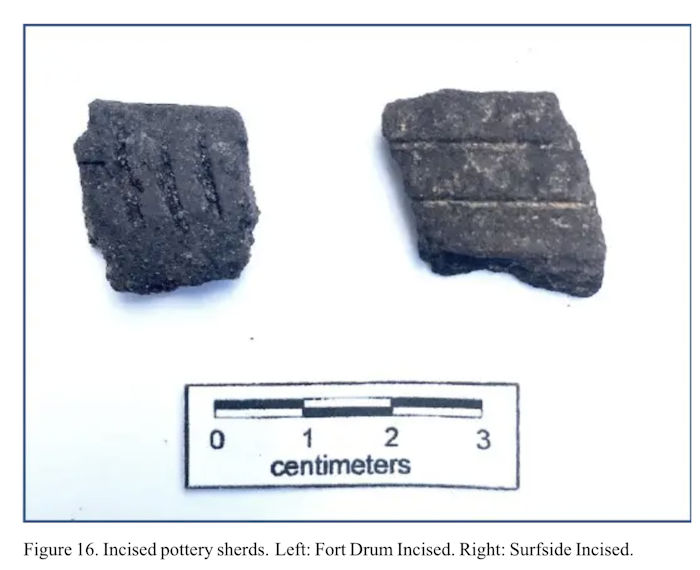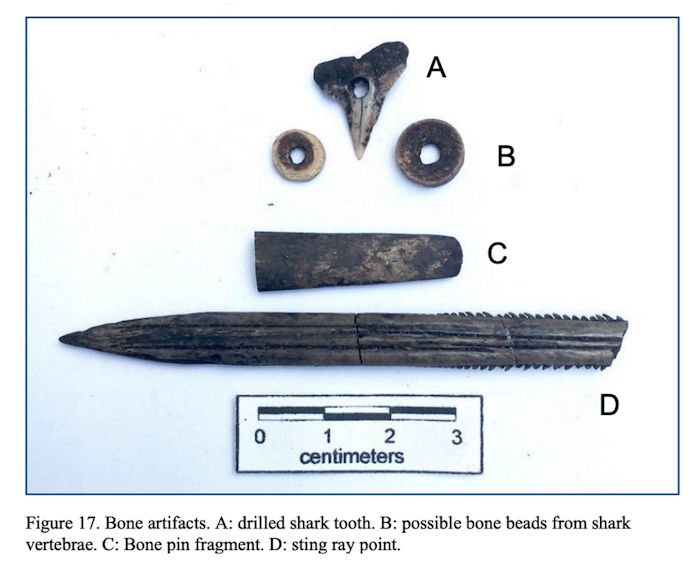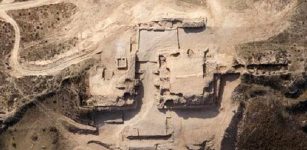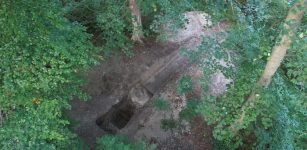Major Archaeological Discovery Of A 7,000-Year-Old Settlement In Miami – But Its Future Is In Danger
Jan Bartek - AncientPages.com - Few have been aware of this, but in the last 18 months, archaeologists have been digging at the Brickell on the Miami River, where developer Related Group plans to build three residential towers.
Scientists report they have made a groundbreaking archaeological discovery at the site unearthing 7,000-year-old artifacts and other evidence indicating this site was once a prehistoric settlement.
444 Brickell Avenue. Courtesy of Archaelogical and Historical Conservancy, Inc.
On the south bank of the Miami River and west of Brickwell Avenue, researchers unearthed tools, spearheads, structural elements, and human remains that indicate ritual burials.
This major archaeological find offers “extensive evidence of continuous Indigenous habitation on the south bank of the Miami River, dating back as far as 7,000 years, far longer than previously thought, to a time when the emergence of human civilization around the planet.
The finds also indicate that a Tequesta tribe settlement at the mouth of the river was larger than originally thought, extending along both the north and south banks to the site of the 2,000-year-old Miami Circle National Historic Landmark in the Biscayne Bay extended,” Canada Today reports.
Courtesy of Archaelogical and Historical Conservancy, Inc.
The discoveries suggest that the capital of the Tequesta tribe, believed to be responsible for the 2,000-year-old Miami Circle visible above, was significantly larger than previously thought.” 1
“The Miami Circle was accidentally discovered in 1998 when property developer Michael Baumann who owned the land, tore down an apartment complex. Before proceeding with the building of his luxury apartments, he was obliged to conduct a routine archaeological field survey of the site.
To his surprise, he found a circular pattern of holes in the limestone bedrock. Archaeologists examined the site, and radio-carbon testing revealed the site was much older than scholars expected.
Courtesy of Archaelogical and Historical Conservancy, Inc.
When John Ricisak, a specialist in the County Historic Preservation department, did a radiocarbon dating, it turned out the wood was between 1,800–2,000 years old, but does this imply the circle is just as old? This is a question scientists cannot agree upon. Some scholars maintain that the circle is younger than the wood, and some suggest that the entire Miami Circle is at least 3,000-year-old, or even much older!” 2
The finds made at the Brickell site can open a new chapter in the history of Miami, shedding new light on the region’s lesser-known past.
“There are artifacts going back sequentially over those thousands of years,” said William Pestle, an archaeologist and chairman of the anthropology department at the University of Miami, who is not involved in the excavation at the related site but is familiar with the discoveries there,” the Sacramento Bee reports.
The Miami Circle, as seen from above. Credit: EduardoValle CC BY-SA 3.0 - Culture Trip
“This is like a continuous record, which is powerful and cool. “You’re going back to the time of the emergence of the first cities in Mesopotamia. It’s thousands of years before the Roman Republic and the Roman Empire. By any measure, this is an early manifestation of human activity. This is legitimately old.”
However, there are concerns this important historical site will not be preserved for future generations, and Miamians will never get to see any of it if Related buries the site in concrete as planned.
Scientists and public members have made several appeals to preserve the site, but their concern has been met with indifference.
“Records show a Related affiliate paid $104 million for the property in 2013. In January, the company took out a $164 million construction loan for the first skyscraper, a rental apartment tower. In a general statement the company said it “has followed all existing laws and regulations for any site in a designated archaeological zone.”
“The importance of this site cannot be overstated,” Sara Ayers-Rigsby, southeast director for the Florida Public Archaeology Network, which is based at West Florida University in Pensacola, told the city’s historic preservation board.
The lack of response to newspaper interviews and comments from the board and the company has been frustration to those who fight to preserve the site.
Courtesy of the Archaeological and Historical Conservancy.
“In an unexpected move, however, the preservation board on Tuesday, by an 8-0 vote, instructed Pernas to begin studying whether they should designate the Brickell site a protected archaeological landmark after Pestle and others showed up at the meeting at Miami City Hall to urge members to take action. That designation would give the city power to require developer Related Group to preserve all or part of the site or make accommodations in its project for public exhibition, and other measures.” 3
Still, Brickell residents are not entirely satisfied and say the Related could do much more.
“Preserving some kind of history is important to our neighborhood,” Abby Apé, the group’s managing director. said. “We want to see these artifacts preserved and we want the city to do the right thing. The concern is that perhaps they’re not taking the proper steps that code requires them to take. It would be beautiful if the developers could have an on site-park that the neighborhood could enjoy.
Some neighbors are blunter. They say they don’t think the city or Related have been acting in good faith and have intentionally sought to keep the finds, as one resident put it, “under wraps.
“The city of Miami is doing absolutely nothing to keep Related from covering it all up,” said Geoff Bain, whose Brickell on the River apartment overlooks the site. “Even our commissioners are unaware of the significance and have not been briefed. I understand no one can stop development, but they can preserve at least a small portion.” 3
Related has said it plans three towers on the site, and the company has invested huge amounts of money in this project. Though some progress has been made, the future of the archaeological site is still uncertain.
Written by Jan Bartek - AncientPages.com Staff Writer
Expand for references- Layla Nelson - Miami officials will consider saving the 7,000-year-old Brickell archeological site, Canada Today
- Ellen Lloyd - Is The Puzzling Miami Circle Much Older Than Previously Thought? AncientPages.com
- Andres Viglucci - A major archaeological discovery was made in Florida. Was it kept ‘under wraps’? The Sacramento Bee

























